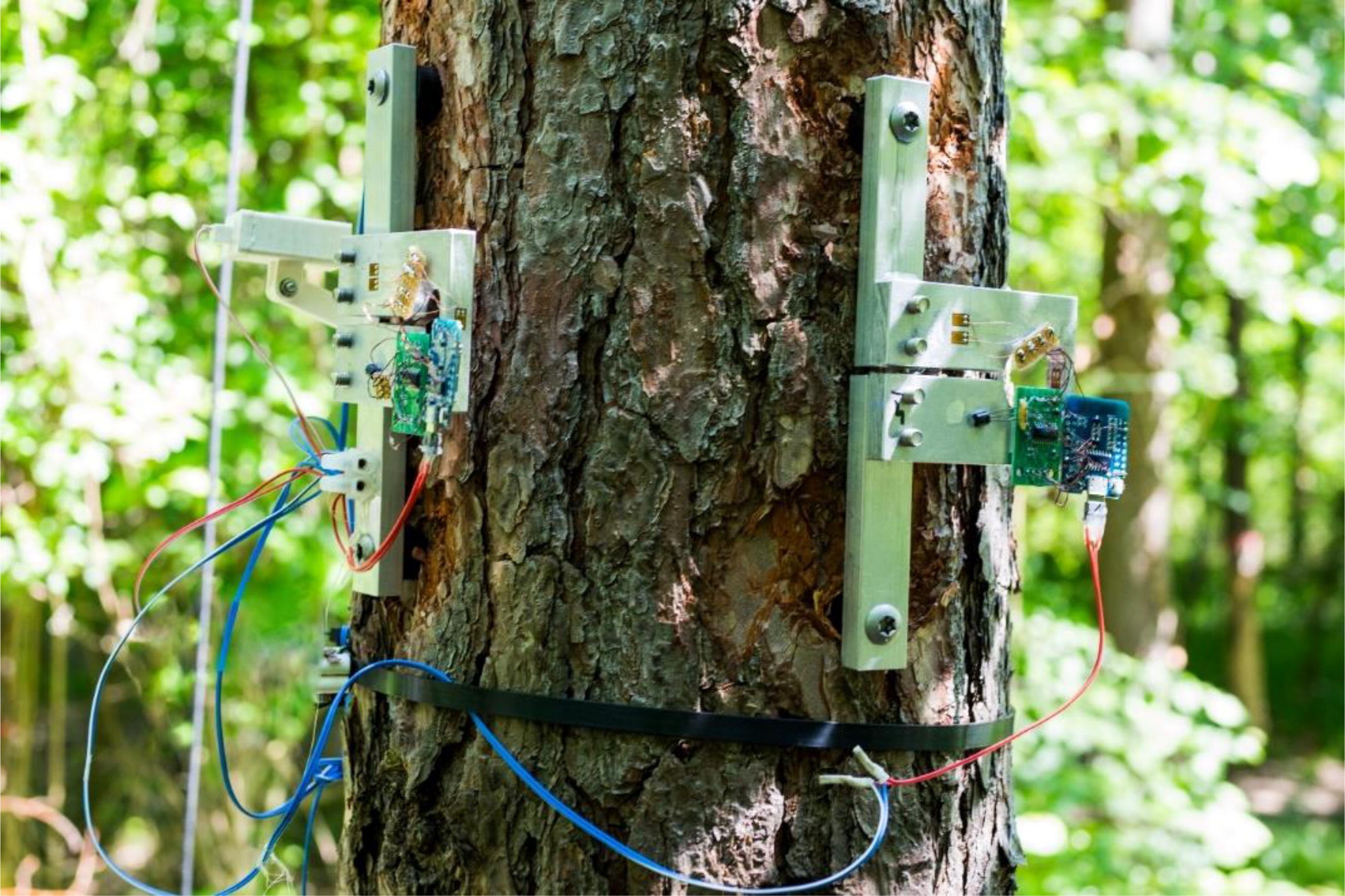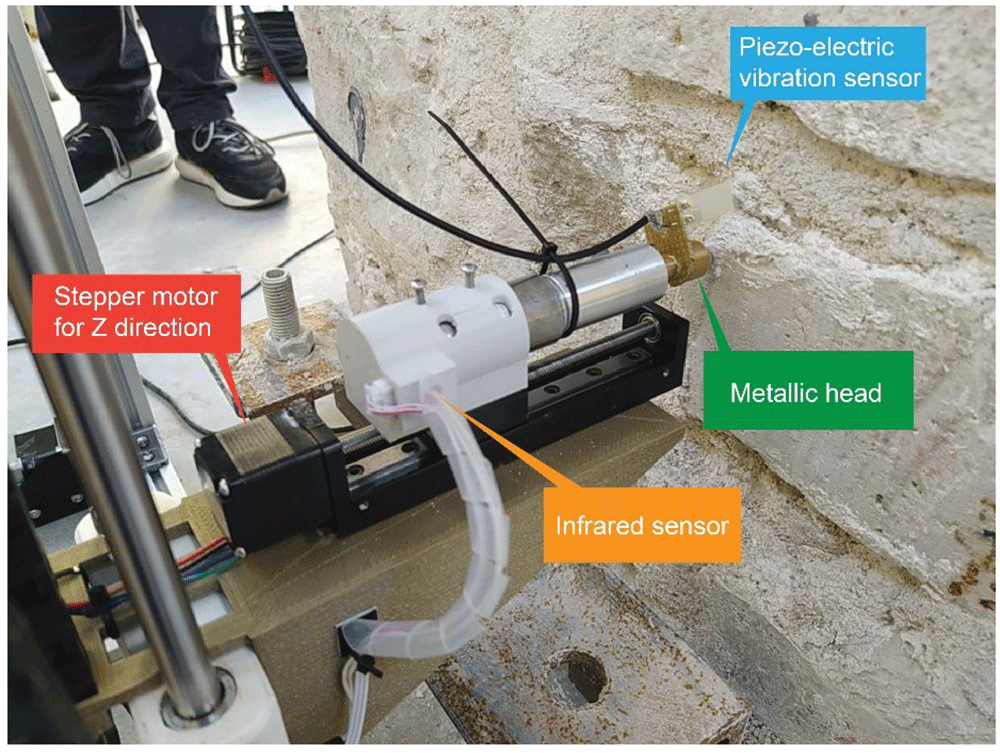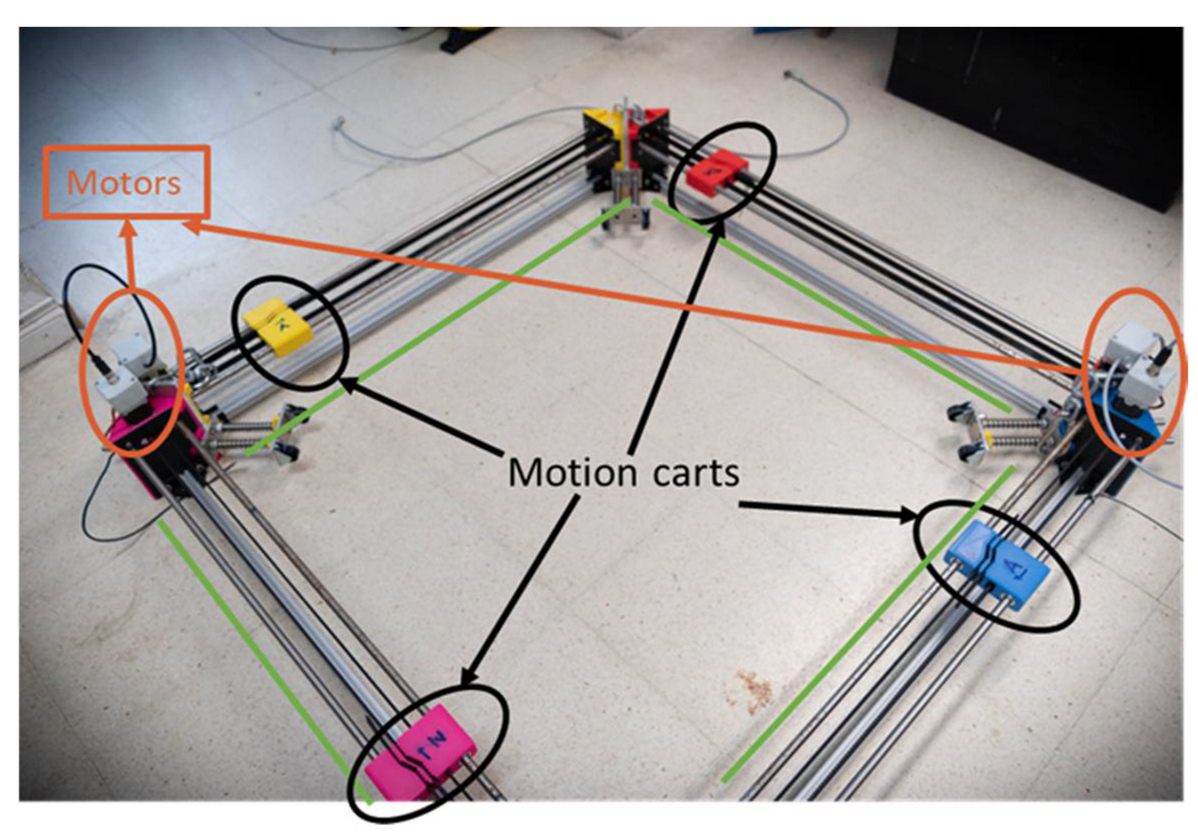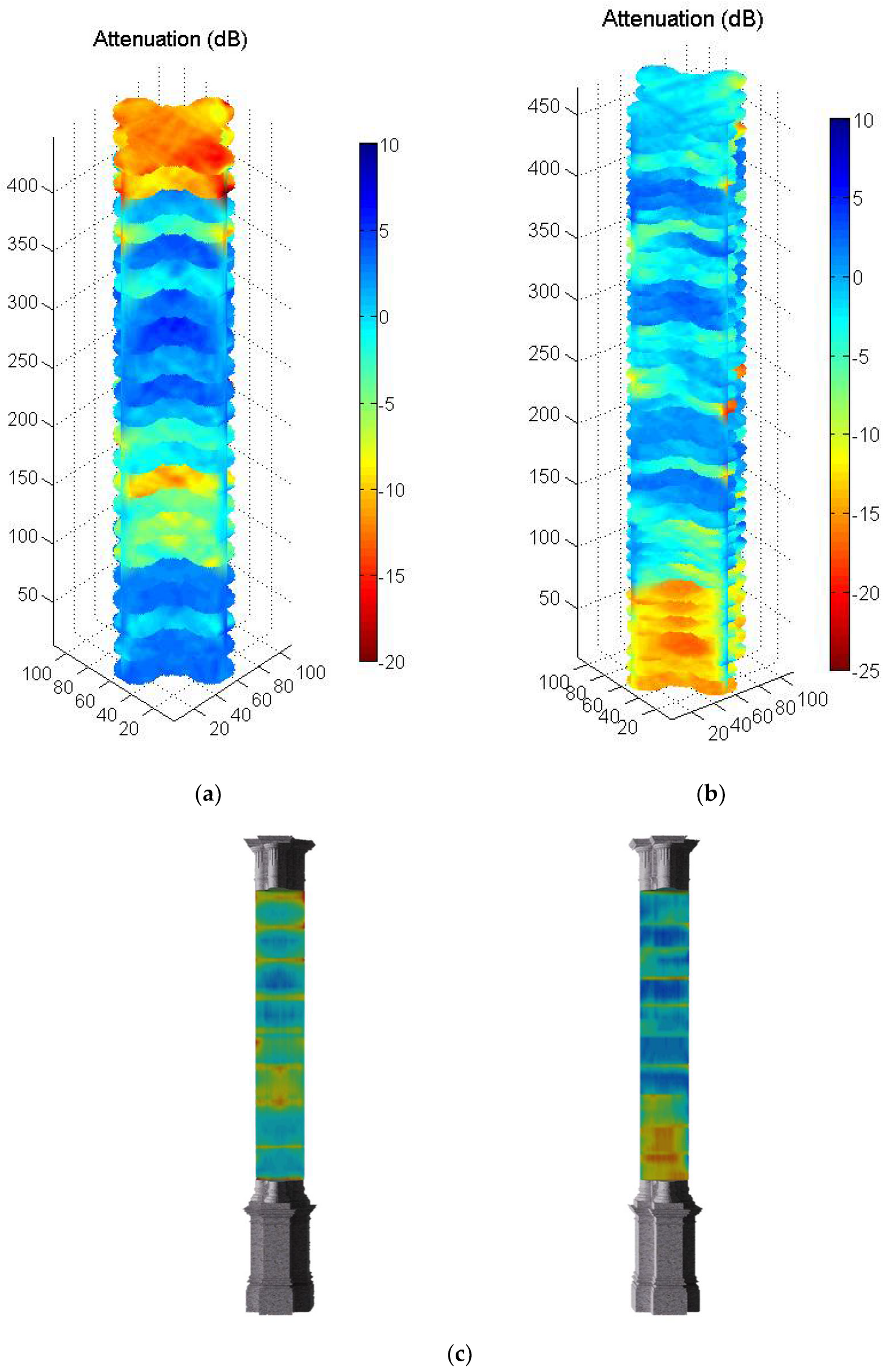In the course of researching this project, I came across a number of papers that covered the topic...or at least made interesting reading.
The first was Enhancing TreeMMoSys with a high-precision strain gauge to measure the wind-induced response of trees down to the ground, by Julius Nikl, Sven Kolbe and Dirk Schindler. This open access paper covered the use of strain gauges to measure wind load on trees. It wasn't exactly related to tree tomography, but it looks darn cool and it was the first time I'd come across strain gauges. Check out figure 6:

(This paper is from HardwareX, which is an open access scientific hardware journal; it is a vast, vast maze of rabbit holes and fun projects.)
Not exactly what I was looking for -- I don't have a tree in my yard, and I suspect that attaching aluminum bars to trees in my local parks would cause talk. But an interesting read nonetheless.
Next up was An automated sonic tomography system for the inspection of historical masonry walls by Ortega J, Meersman MFL, Aparicio S et al. This used a "scanning laser vibrometer" to pick up the vibrations from their "hitting device" (I love this simple term), which used a solenoid to arm, then release a spring-loaded head:

The hitting device moves around on a robotic frame to hit different parts of the masonry:

This allows it to tap the wall at precise grid points.
The paper goes into some detail on the signal processing, which I suspect (spoiler alert!) is going to need some attention:
The elimination of the noise during the raw data pre-processing was not straightforward. Common filters (e.g. low-pass or smoothing functions) may alter the signal and the identification of the sonic wave front. This has a significant impact on the results, which are based on feature extraction in the time domain. The final method adopted was smoothing the signal by means of convolving the signal in the time domain with a square wave function. Instead of taking the convolution of a square wave function that is as wide as the total width of the waveform, the waveform is convolved with a very small square wave that moves over the complete time series. This process introduces minimal phase shifts that can also easily be accounted for, proving to be a robust filtering method. It also allows the user to iterate this convolution algorithm to get more or less smoothing of the signal.
I strongly suspect I'm going to need to come back to this section of the paper. I also like the idea of a mechanical hitting device.
In the same vein (tomography + really hard stuff), An Ultrasonic Tomography System for the Inspection of Columns in Architectural Heritage (authors: Aparicio Secanellas, S.; Liébana Gallego, J.C.; Anaya Catalán, G.; Martín Navarro, R.; Ortega Heras, J.; García Izquierdo, M.Á.; González Hernández, M.; Anaya Velayos, J.J.) covers using tomography for, well, inspecting old columns. (It's part of a whole issue of the journal "Sensors" called "Nondestructive Sensing and Imaging in Ultrasound".) These folks used water as the transducer for ultrasound -- I think roughly analogous to how a fetal ultrasound would use jelly -- and 3D-printed their own nozzle to make it all work.
Like the masonry paper, they used a mechanical system to move all around the columns they were measuring:

This paper also discusses the signal processing, though it doesn't seem like it's got quite as much detail as the masonry paper; the focus seems to be more on the machinery (which is cool) and the results they get analyzing 13th century columns (also cool):

Those are a few papers that covered tomography in masonry and stone, plus a bonus paper with strain gauges. Next, I'll cover a few papers that deal more specifically with wood.
 Hugh Brown (Saint Aardvark the Carpeted)
Hugh Brown (Saint Aardvark the Carpeted)
Discussions
Become a Hackaday.io Member
Create an account to leave a comment. Already have an account? Log In.